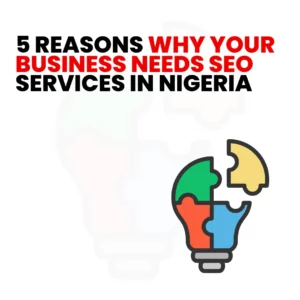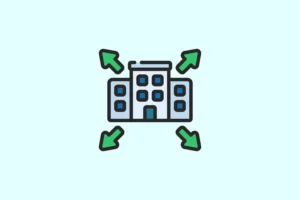When surfing the web, speed is critical. Slow websites can be annoying and make people less likely to interact with content. How well are the pictures optimized? Images are a big part of your website, but if they aren’t optimized for loading speed, they can slow down your site and make it less enjoyable for users. This article explains how to optimize website images for faster loading speed. Using these methods, you can ensure your website loads quickly and easily, keeping visitors interested and happy. We will walk you through the steps you need to take to optimize your images well, from knowing why image optimization is vital to choosing the suitable formats, resizing and compressing images, using lazy loading, caching, and measuring performance.

What Is Image Optimization?
Image optimization is a vital part of making sure your website loads quickly. Image optimization is making your photos smaller without lowering their quality. Using different techniques and strategies, you can make your website run much better and give your Nigerian users a smooth viewing experience.
Why is image optimization important for website loading speed?
In a place like Nigeria, where internet speeds can change, optimizing your images’s even more critical. Large pictures that aren’t optimized can slow down your website’s loading speed by a lot, which can make users angry and cause them to leave your site altogether. By optimizing your images, you reduce their file size, which makes them run faster, even on slower internet connections.
Factors affecting image loading speed
To optimize your pictures well, you need to know the most essential things that can affect how fast they load. Here are a few things to think about:
1. Size and quality of the image: It takes longer for large pictures to load. You can significantly reduce the file size of your images by resizing and optimizing them to fit the needs of your website.
2. Image format: Different picture formats can compress images differently. For example, JPEG is suitable for photos and pictures with a lot of detail, while PNG is suitable for transparent images. You can find a good balance between the image’s quality and the file’s size by picking the proper image format.
3. Compression techniques: Image compression reduces the size of an image file while keeping the picture quality at a reasonable level. Techniques like lossy and lossless compression help you achieve smaller file sizes without significant visual degradation. This ensures that your images load fast and correctly, even for people with slower internet speeds.
6 Ways to Optimize Images for a Website
If you want your website to load faster and your users to have a smooth browsing experience, you must optimize images to load faster. Using these tips, you can find the perfect mix between a website’s visual appeal and how quickly it loads, ensuring your site stays competitive in today’s fast-paced digital world.
Below are some ways to methods you can use to optimize images for faster website loading speed;
1. Choose the right image format
2. Resize and crop images
3. Compress images to reduce size
4. Implement lazy and progressive loading
5. Integrate browser caching for repeated visits
6. Measure and monitor image loading speed regularly
1. Choose the Right Image Format
Choosing the right image format is very important if you want your website to load quickly. Here are some of the most common image formats used on the internet;
Joint Photographic Experts Group, or JPEG: JPEG is great for photos and other pictures with a lot of colours and detail. It compresses images quickly and with little loss of quality. JPEG is often the best file for websites that show photos of products or colourful images.
Portable Network Graphics, or PNG: PNG is a flexible picture format that works well with images that have sharp lines, solid colours, or text on top of them. If your website has logos, icons, or images with transparent backgrounds, PNG can keep the details without lowering the quality.
Graphics Interchange Format, or GIF: GIF is often used for animated pictures or simple graphics with few colours. GIFs can make your website more attractive, even though they can’t be compressed as well as other formats, and may lead to bigger file sizes. But be careful with GIFs because bigger file sizes can slow down loading, especially for people with slower internet connections.
Things to consider when choosing picture formats
Think about the following when choosing the correct image file for your website:
Image type: Certain types of content work better with specific image formats. Consider whether your pictures are photos, drawings, or icons, and then choose the format that keeps their quality the best and keeps the file size as small as possible.
Transparency requirements: PNG is the best file to use if your images need transparency, like logos or graphics with transparent backgrounds. But remember that PNG files are bigger, so you might want to use compression methods to make them even better.
Colour depth and the ability to compress: Think about how each format can compress your pictures based on their complexity and how many colours they have. JPEG is good at reducing the size of photos, while PNG is better at keeping details and sharp lines.
2. Resize and Crop Images
To ensure your website loads quickly, resize and crop your images to the right sizes. Large pictures can make your website move much more slowly, especially for people with slower internet connections. Think about the following when resizing your images:
Assess your website’s layout: Find out how wide or tall your images can be and still fit your website’s style. By resizing your images to fit these measurements, you can ensure they don’t get distorted and load quickly.
Use responsive image design: In places where people use many different devices and screen sizes to view websites, it is essential to use responsive design. Using CSS and HTML, you can change the size of your pictures based on the user’s device. This makes sure they look good and load quickly.
Use responsive image techniques
Responsive images change to fit different screen sizes, making the user experience better on all devices. Using responsive image methods on your website for people can make it load much faster. Think about the following options:
Srcset attribute: Use the “srcset” attribute to provide various versions of an image, each one optimized for a different screen resolution. This lets the browser choose and load the right size image, so people don’t have to download as much.
Picture element: The “picture” element lets you give different media queries and various image sources. By giving different picture sizes or formats based on the user’s screen size, you can ensure that users get the best image.
Crop unnecessary parts of the image
Cropping is cutting out parts of a picture that are optional. You can reduce their file size by intelligently cropping your pictures and loading your website faster. Think about these things:
Remove empty or irrelevant space: Crop out any white space or parts of the picture that don’t add to its meaning or visual appeal. This cuts down on the file size and makes the picture load faster.
Focus on the image subject: If you want to highlight a certain subject or item in your photo, you can crop it. By removing things that take away from the general look, you can make it look better and smaller the file size.
Avoid CSS scaling
Even though it might be tempting to resize photos using CSS in your website’s code, this can slow down the speed at which people can load your site. Instead, you should resize and optimize the pictures before you put them on your website. When you scale images with CSS, the browser still has to load the full-size image, which slows down the overall speed.
3. Compress Images to Reduce Size
In Nigeria, where internet speeds fluctuate, it is important to compress your images to load your website faster. Large images can slow your website down and make it take longer to access your information. Compression makes them load faster and gives your users a better experience.
3 ways of compressing a picture
Lossy compression: To lower the size of a file, lossy compression removes some image data. This method works well for photos and other complex images where a little loss of information is okay. Use tools like Adobe Photoshop, TinyPNG, or Squoosh to add lossy compression to your images while keeping them looking good.
Lossless compression: Lossless compression cuts the size of a file without hurting the quality of the picture. This method works best with pictures that have clear lines, solid colours, or text on top of them. Lossless compression can be done with Adobe Photoshop, ImageOptim, or OptiPNG. This makes files smaller without a visible drop in quality.
Online tools for compressing images: Many online tools can compress your images without needing you to install any software. You can quickly share and compress your images with services like Compressor.io, Kraken.io, and tinypng.com, giving you optimized versions to download.
4. Implement Lazy and Progressive Loading
Lazy loading is a way to keep pictures from loading until the user scrolls down and can see them. This method reduces the time it takes to load the first page, so your website can load faster.
How to implement lazy loading
Think about the following ways to adopt lazy loading for your Nigerian users:
JavaScript libraries: Several JavaScript tools can help you easily set up lazy loading. You can add the appropriate code to your website using these libraries so images only load when visible to the user.
API for Intersection Observer: The Intersection Observer API is a built-in browser API that can tell when an element, like a picture, enters or leaves the viewport. Using this API, you can make pictures load when they become visible to the user, speeding up the loading time. For a better user experience, progressive loading is used.
Implementing progressive loading
Another way to improve the user experience on your website is to use progressive loading. Progressive loading differs from lazy loading, which waits until the user interacts with the page. Instead, progressive loading loads the most important content first, then the less important content.
Critical content first: Find the most important text, buttons, and images that must be loaded to give the user a valuable experience. People can start using your website immediately by loading this content first while the rest loads in the background.
Background loading: After the most critical content has loaded, load the less important content, like pictures, one at a time further down the page. This method lets users start interacting with the content while the remaining pictures load, making the load time seem shorter.
5. Integrate Browser Caching for Repeated Visits
Using browser caching can significantly improve the performance of your website and make it easier for your users to view. Some files, like images, CSS, and JavaScript, can be saved locally on the user’s device after the first visit, thanks to browser caching. This way, when people return to your website, it will load faster because the stored files won’t have to be downloaded again.
To make the most of browser caching for your Nigerian users, think about the following:
Set the right headers for the cache: Set up your server to send cache tags that tell the browser how long it should keep specific files in its cache. By giving static files that don’t change often longer expiration times, you cut down on the number of calls made to the server, which speeds up loading.
Use versioning or unique filenames: If you change your files, use versioning or unique filenames to ensure the browser gets the most recent version. This keeps people from getting cached files that are too old.
The advantages of Content Delivery Networks (CDNs)
CDNs are a great way to improve a website’s speed. A CDN is a network of servers spread out across the world. It saves cached copies of static files on your website in multiple locations. When someone visits your website, the CDN sends the files from the server closest to them. This cuts latency and speeds up loading time.
Here’s how you can make good use of CDNs:
Choose a CDN service you can trust: Choose a provider with a good name and a strong footprint or the rest of Africa. Ensure their network has servers close to Nigeria to reduce delay and make content delivery faster.
Offload static content to the CDN: By sending static files like images, CSS, and JavaScript, you can make your origin server less busy. The CDN can send these files to users more efficiently, which speeds up download time and improves performance as a whole.
6. Measure and Monitor Image Loading Speed Regularly
Measuring your website’s performance is vital to ensure it is optimized for how quickly images load. Some tools can help you determine how fast the page runs and where it could improve. Here are some tools to think about:
Google PageSpeed Insights is a tool that checks your website’s performance and gives tips on making images load faster. It gives you information about how people use your site on mobile and PC devices so you can meet their needs. You can test your website’s loading from different places using WebPagetest. It gives you detailed reports on performance metrics, such as the time for images to load, so you can find bottlenecks and improve.
Focus on the following metrics when trying and measuring how fast an image loads:
First Contentful Paint (FCP): FCP measures how long it takes for the first thing to appear on the screen, like a picture. Try to have a fast FCP so your Nigerian users can see things quickly.
Largest Contentful Paint (LCP): LCP measures how long it takes for the screen to show the biggest picture or element. Optimize your biggest pictures to ensure you have a fast LCP, making the page load faster.
Total Page Size: Keep an eye on your page’s size, including its parts. Reduce the size of the images to make the page smaller and faster to load, especially for people with slower internet access.
Conclusion
Remember that internet speeds can vary, so if you want to help people with slower connections, you must ensure your images load quickly. You must ensure your site loads quickly so your audience has a great experience.
Now is the time to take action and optimize your pictures to load faster on your website. Doing this makes it easier for your audience to browse your site and improve engagement, boost sales, and grow your business.
Don’t let slow loading time stop you from being successful. You can contact a web designer if you’re ready to give your users a lightning-fast browsing experience.




